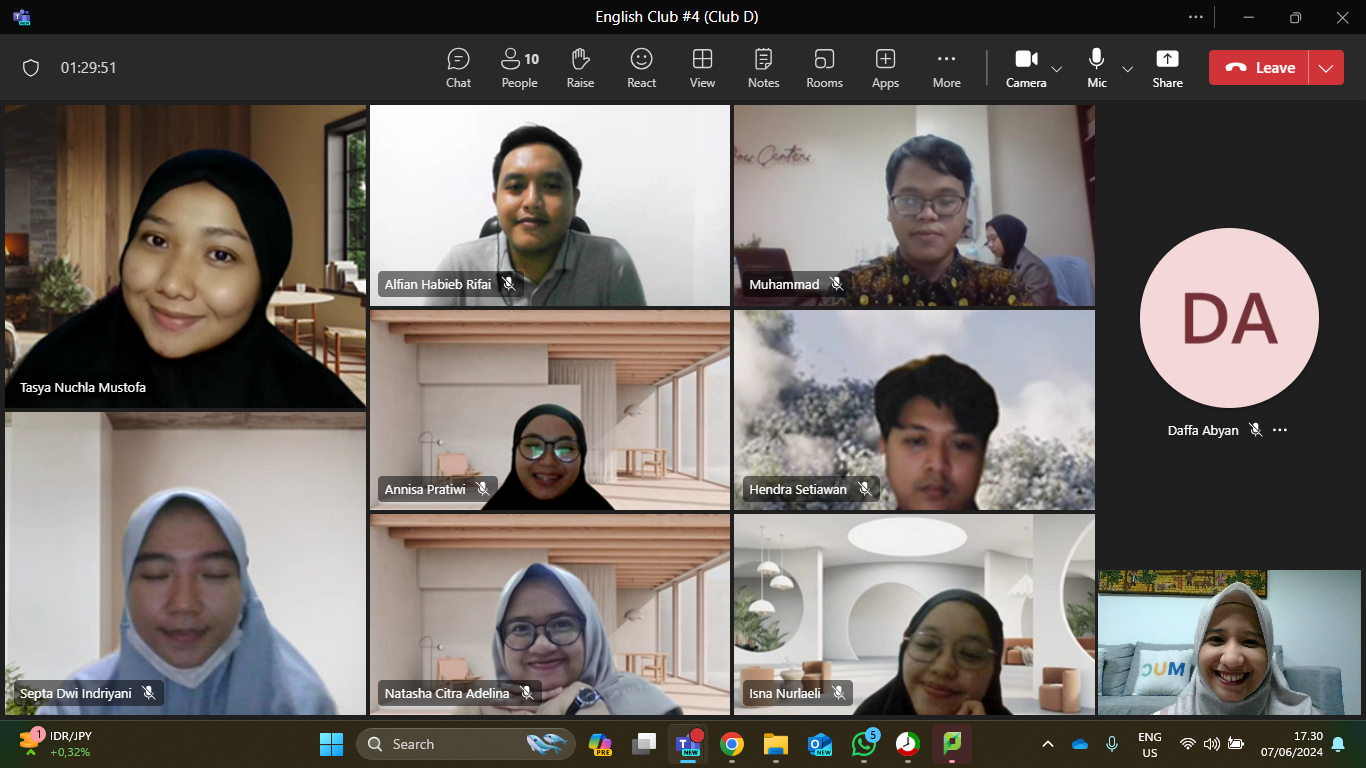Hybrid Working: Synergy Between Employee Satisfaction and Company Growth

The trend of hybrid working has gained popularity post-Coronavirus Disease 2019 (Covid-19) pandemic. We all remember how, during the pandemic, almost everyone was "forced" to carry out activities from home, from students to workers. At that time, almost all business sectors and offices adopted a work-from-home system.
At first, remote working felt challenging because it required many adjustments. However, this work system proved to be quite effective for both employees and companies. The majority of employees felt more productive, had more quality time with their families, and were able to maintain a work-life balance while working from home. The flexibility of the remote system made employees more content, reducing their desire to switch companies or professions.
Then, after the pandemic was brought under control, work trends began to shift. Some companies returned to in-office work policies, while others continued with their work-from-anywhere policies. Some companies, in fact, chose to combine both methods, allowing employees to work from home and in the office. This is known as hybrid working.
Understanding the Hybrid Working System
In 2023, the Swiss computer equipment manufacturer, Logitech, surveyed hybrid working trends in Indonesia, involving 500 professional employees. The survey results indicate that 62% of Indonesian employees prefer hybrid working. Only 16% of employees prefer working from the office while the remaining 21% prefer working entirely remotely.
According to Kompas.com, hybrid working is defined as a combination of working from the office (WFO) and working from anywhere, including from home (WFH). This system offers employees the flexibility of workplaces but still requires them to be present in the office at certain times. Many companies in Indonesia are now starting to transition to the hybrid working model.
Implementing hybrid working requires adaptation from all company elements, including leaders and employees. With reduced face-to-face interaction, effective and efficient communication becomes the main key to maintaining productivity and team collaboration. This is where adequate technology and tech-savvy employees play a vital role.
The hybrid working system not only offers flexibility for employees but is also designed to boost performance and collaboration. When working from home, employees are expected to complete tasks, contribute creative ideas, and work on projects independently. On the other hand, their presence in the office is focused on activities that require direct interaction, such as coordinating with other teams, mentoring, or engaging in in-person self-development programs.
Companies can create a flexible schedule between WFH and WFO based on agreements with the employees. For example, in a given week, there could be designated days when employees are required to work in the office and other days when they can work from home. Once the agreement is made, employees are expected to adhere to the policy to maintain stability and ensure smooth company operations.
Advantages of Hybrid Working
The hybrid working concept is considered effective in combining the best aspects of WFH and WFO systems. This concept is increasingly popular among many companies in Indonesia. What, then, are the advantages of hybrid working?
1. Flexibility
Employees have flexibility in managing their time, allowing them to optimize productive hours when working from home or other locations while simultaneously juggling other activities. Additionally, employees can save commuting time from home to the office. The time and energy typically spent on commuting can be allocated more effectively to work from home.
2. Improved Quality of Life for Employees (Work-Life Balance)
Flexible working hours provide employees with the freedom to balance their responsibilities in the professional world and their personal lives. For example, working mothers can manage both their roles as employees and homemakers. This balance will positively impact work productivity.
3. Efficiency of Office Operational Costs
WFH benefits not only employees but also companies. Reducing office hours minimizes operational costs such as electricity, internet, and workspace usage. For startups, this serves as a cost-saving solution for reducing office rental and other operational expenses.
Hybrid Working at MUC
Since 2019, a year before the Covid-19 pandemic, MUC Consulting had designed a remote working system that provided flexibility for employees. MUC Consulting began implementing this system in early 2020, catering to employees seeking various modes of work. Therefore, this system was initially an alternative approach.
However, in March 2020, when the Covid-19 hit Indonesia and the government enforced social restrictions in various regions, remote working ceased to be just an option but became the official working method at MUC Consulting for all employees.
As the situation post-Covid-19 has improved, MUC Consulting, accustomed to remote working, has transitioned to hybrid working—a blend of remote work and in-office work. Each week, employees are required to come to the office for at least two days with their team members. This facilitates coordination and strengthens relationships within the team. For the remaining days, employees have the flexibility to adjust based on their personal needs and team requirements.
The hybrid working policy has undoubtedly brought many positive impacts for both employees and the company management, including increased employee productivity, enhanced employee engagement with the company, sustained quality of life for employees, and so on.
However, the hybrid working system also has some drawbacks, including:
1. Communication
Not all employees can maintain effective communication with a remote working system. Issues such as slow responses or hesitation to contact superordinates and colleagues online can arise. Relying on technology for remote communication often leads to misunderstandings, making it one of the challenges of remote working.
2. Teamwork
Building bonds and teamwork is undeniably easier through direct or face-to-face interaction. Direct interaction allows messages to be conveyed more easily and clearly. However, in a hybrid working system, the frequency of in-person meetings can decrease, requiring extra effort from superordinates and management to build these bonds, such as organizing joint events or offline meetings.
3. Management Controlling System
Behind the hybrid working system, which offers flexibility and comfort for employees, lies a control system designed by company management to ensure that employees remain productive without direct supervision. To maximize its effectiveness, it is essential to instill positive values such as integrity and service excellence from management to employees. This effort should be supported by technology that facilitates remote communication, shared data storage, productivity and work quality measurement, etc.
Hybrid working may not be the best work system and still has potential drawbacks. However, MUC Consulting believes that with continuous improvements and the right approach between management and the employees, hybrid working can be an effective solution to maintain employee productivity.


